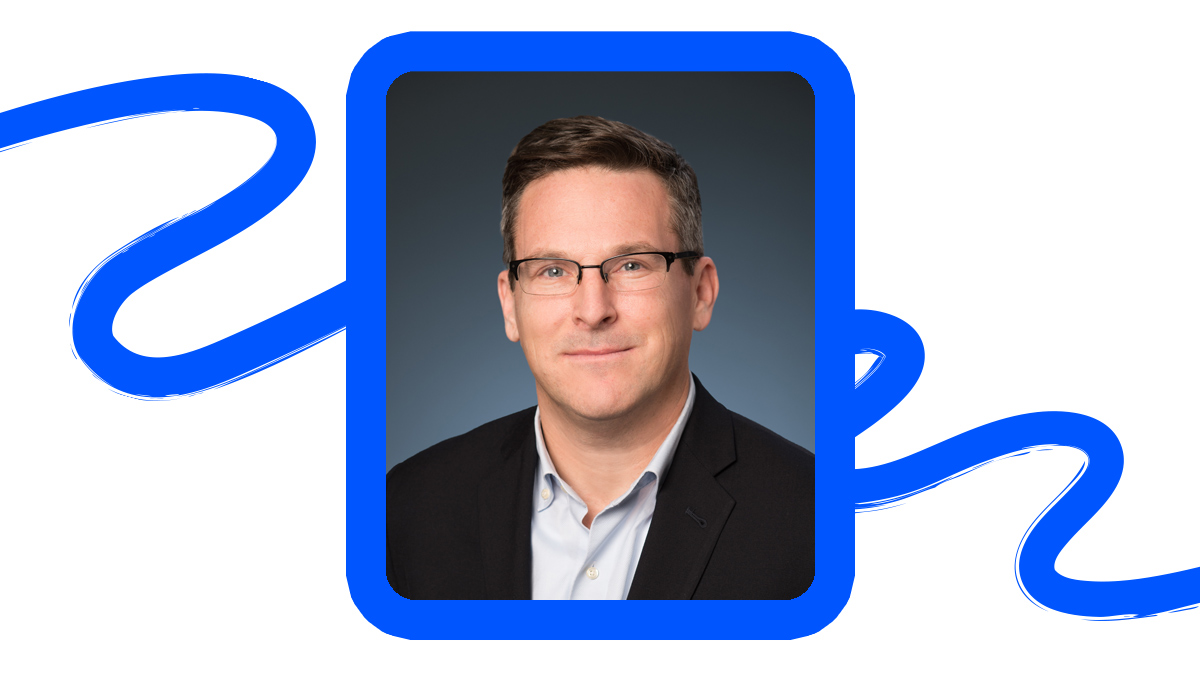Talking to an Expert: COVID-19’s Impact on Cures Research

The questions came like a waterfall as JDRF President and CEO Aaron J. Kowalski, Ph.D., hosted a Facebook Live event on April 3 with hundreds of members of the type 1 diabetes (T1D) community.
As he spoke, attendees used the “chat” feature to repeatedly ask: “Is he a type one.” Others chimed in quickly: Yes. Dr. Kowalski is JDRF’s first president with T1D, diagnosed when he was 13. (His brother was diagnosed before him, at age 3.)
“The best piece of advice I received in managing my type one was from my parents, who told me and my brother: ‘You’ll be able to do everything your friends can do and more.’ They were right, don’t let it hold you back. You only live once.”
Dr. Kowalski talked about T1D research moving forward even as so many institutions have closed because of the coronavirus pandemic, how he plans to support research without JDRF’s iconic large-crowd events and what the future of T1D research looks like.
He also answered a question that many on the chat said they thought he might avoid:
Why haven’t we cured type one diabetes?
“I am going to tackle this because what you will find with me as CEO of JDRF is full transparency. I know that many supporters are frustrated. ‘Why is there not a cure yet. Should I believe you when you say we are making real progress?’”
The question was driven by a pledge made by JDRF in the late 1990s that a cure for T1D was just years away.
At the time, researchers where working on islet transplants, which took beta cells from a cadaver pancreas and implanted them in a person with T1D. Once transplanted, the islets were to begin producing insulin and regulating blood-glucose levels. The procedure was used mainly in cases of extreme and unpredictable blood-sugar swings and hypoglycemia.
“These islet transplants cured people with type 1 diabetes,” Dr. Kowalski said. “Two decades later, these people are still insulin free.”
The challenge, researchers quickly realized, was twofold. First, they did not have access to enough beta cells. In the last 20 years, about 5,000 islet transplants have been performed; yet 64,000 new T1D diagnoses are made every year in the United States alone. Second, the treatment needed ongoing immunosuppression medication for the new cells to be retained by the body. The ongoing use of immunosuppression medicines can lead to other medical issues.
“This was not a bait and switch. This was something that we believed was real—and it was—it just was not scalable. But believe me that we are working to make it scalable, and it will happen.”
Dr. Kowalski said scientists have been racing to solve both challenges, with JDRF driving their research through funding, collaboration and strategically bringing in new expertise and partners to tackle the problem.
How has research gotten us close to cures?
“We now have line of sight to address both of those barriers. We can now make insulin-producing cells from stem cells and that would allow for the supply and demand issue to be fully addressed,” Dr. Kowalski said.
In September 2019, a company long supported by JDRF and working to mass produce insulin-making cells was bought by a major pharmaceutical leader. “They made a huge investment to make this work real.”
In addition, Dr. Kowalski pointed to a series of projects working to implant cells without the need for potentially harmful immunosuppressant drugs. He said research being done at the new JDRF Center of Excellence at Northern California is forward reaching and groundbreaking in “working to cure type one with immune suppression-free cell transplants.”
How has COVID-19 impacted T1D research?
Work in T1D research continues, but the coronavirus pandemic has slowed some projects where researchers are not able to access labs, Dr. Kowalski said.
“In January, we were saying we are in real renaissance of research in terms of cures for type one diabetes, making real, tangible, specific progress….We were all coming together and moving fast. And now, here we are, seeing research slowing down because we can’t get into some of the labs. It’s hard. But one thing we know for certain: we are going to come out of this, it won’t last forever. We will come back, focus on our mission to cure type 1 diabetes.”
Why does JDRF need to keep fundraising if research has slowed?
Regardless of what else is happening in the world, T1D does not stop, Dr. Kowalski said. And neither does T1D research or JDRF’s support of the community. JDRF continues to support ongoing research, clinical trials and plan for the coming months when all work resumes full speed.
In addition, the needs of the T1D community are not less, but more, because of COVID-19. He said JDRF is working “round the clock” with other organizations to share accurate, clear messages and advice, and that JDRF continues to advocate for the needs of the community—including ongoing medical coverage, affordable access to insulin and availability of T1D supplies in hospitals facing extreme shortages during the pandemic.
How can you raise funds without in-person events?
JDRF is transforming its walks, rides and galas into virtual events, where people and teams still participate, but on their own instead of in a large group. Rather than connecting in person, they connect virtually through social media. Dr. Kowalski is joining two “virtual runs” and said JDRF has hosted several successful virtual walks already, with more to come.
“Where people can, and are able to, we hope they will continue to support this mission so that we can cure type one diabetes for everyone.”
Listen to the full Facebook Live recording here.
Access more information on staying safe with T1D during COVID-19 here.